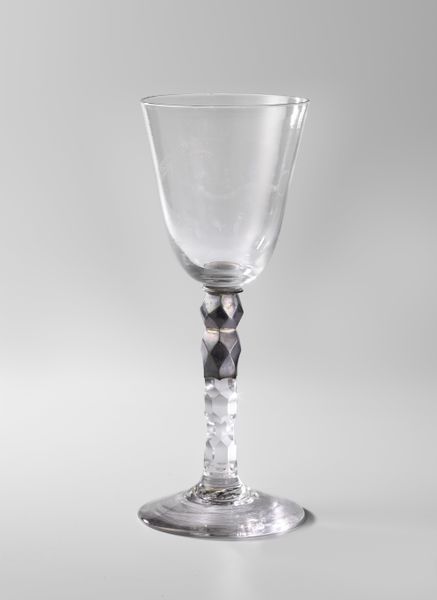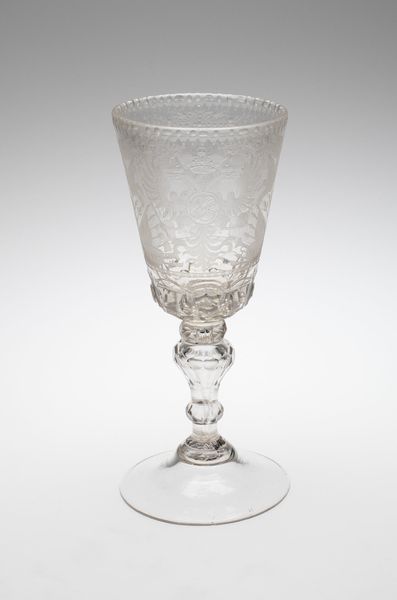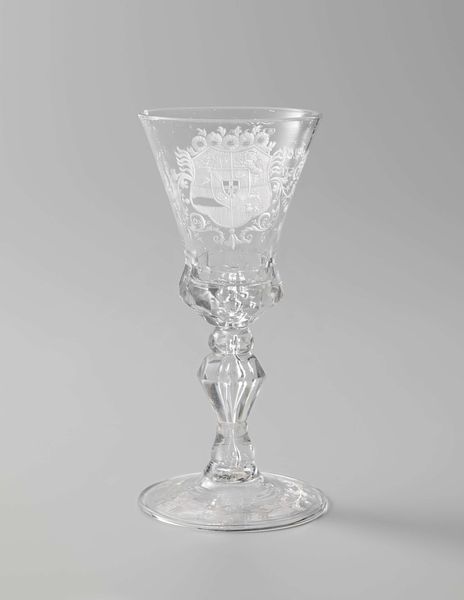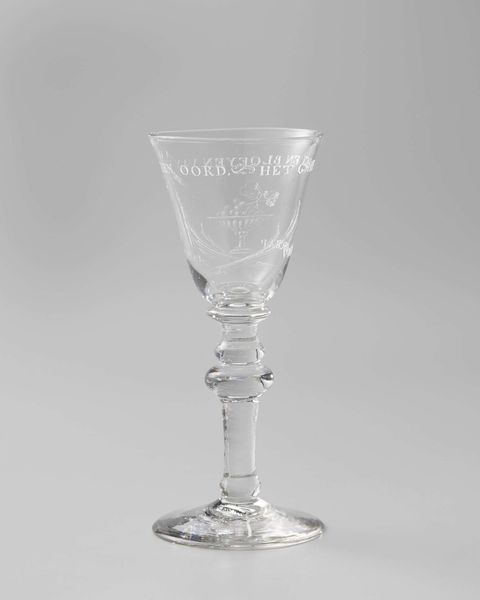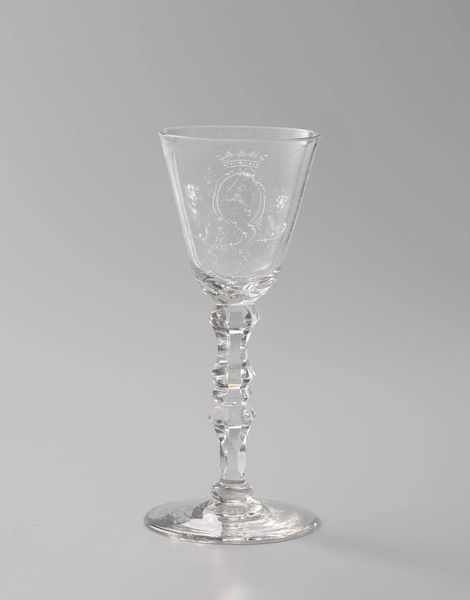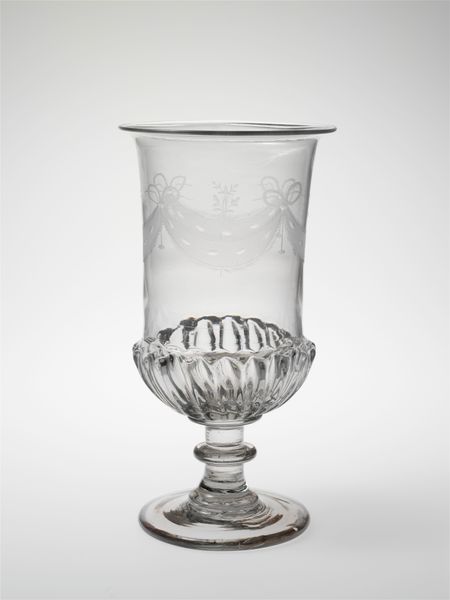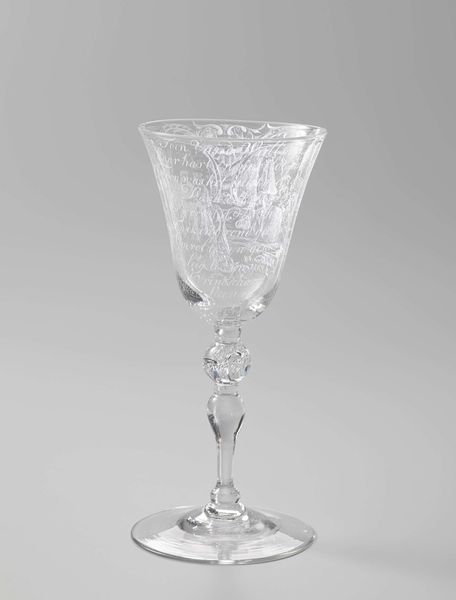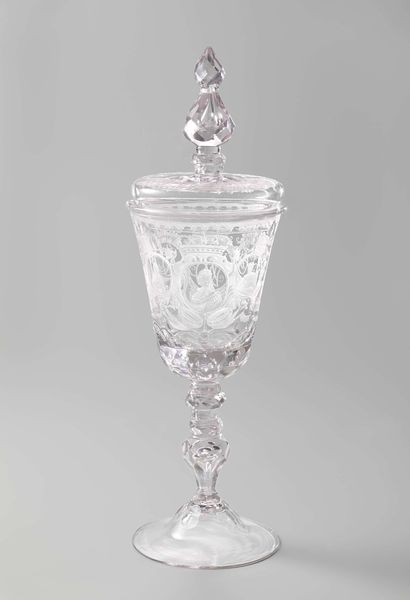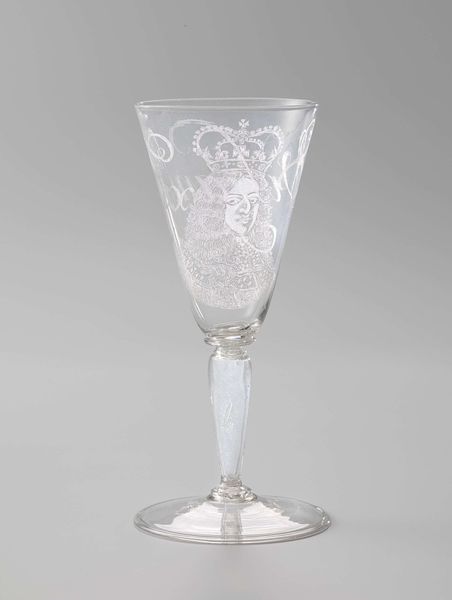
silver, metal, sculpture
#
silver
#
baroque
#
metal
#
sculpture
Dimensions: 8 3/4 x 6 1/2 x 6 1/2 in. (22.23 x 16.51 x 16.51 cm)
Copyright: Public Domain
This Eucharistic Chalice was made in the 17th century by André Schiller, primarily from silver and gold. Consider the material qualities of these precious metals. Their costliness would have immediately signaled the importance of the object. The chalice’s form also speaks to skilled artistry. The bowl’s smooth interior and the intricate ornamentation required goldsmithing expertise. Note the detailed chasing and repoussé work; the delicate relief patterns of foliage and possibly heraldic symbols suggest countless hours of labor. The making of this chalice would have been deeply embedded in the socio-economic structures of its time. Craftspeople like Schiller operated within guilds, with specialized workshops. The division of labor and the precious materials involved point to a complex network of extraction, production, and consumption. Thinking about this chalice, it is important to recognize that the perceived value and meaning are inseparable from the social and economic processes through which it came into being.
Comments
minneapolisinstituteofart over 1 year ago
⋮
According to Catholic belief, performing the Eucharist – the sacrament of Holy Communion in the Christian faith – transforms the wine from the Eucharistic chalice into the blood of Christ. Christian theologians have historically disputed whether the ritual of consecration physically transforms the wine into Christ’s blood, or if Christ is only symbolically present. Schiller’s Eucharistic Chalice is decorated with the scene of the crucifixion, acting as a visual reminder of the spilled blood of Christ contained within the chalice.
Join the conversation
Join millions of artists and users on Artera today and experience the ultimate creative platform.
